Why you can trust Tom's Hardware
The BenQ Zowie XL2546K comes set to its FPS1 picture mode which has a few issues in color saturation tracking and gamma. Changing to the Standard mode makes a significant improvement in quality.
Grayscale and Gamma Tracking
We describe our grayscale and gamma tests in detail here.
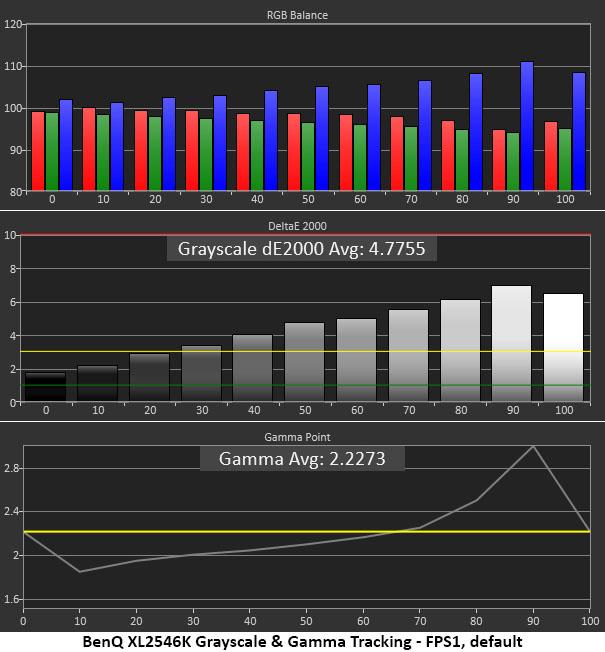
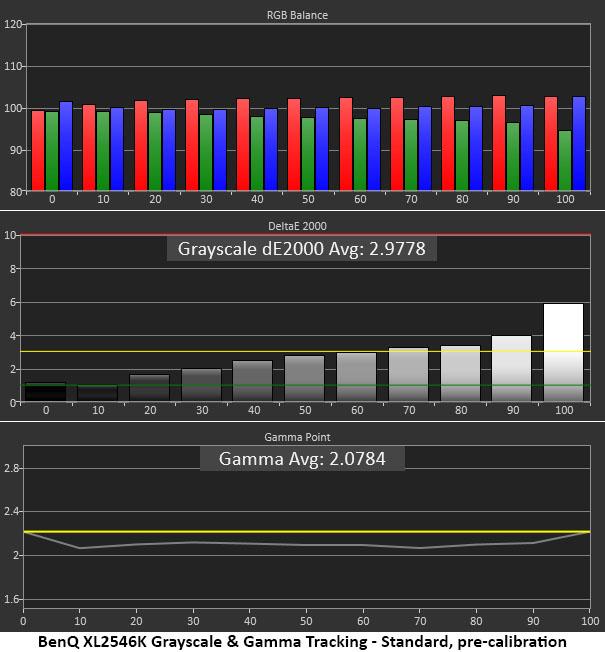
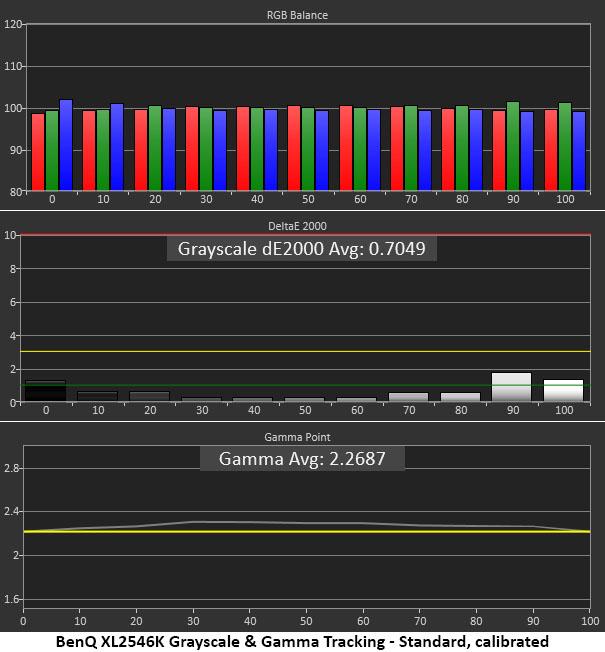
In FPS1 mode, grayscale runs decidedly blue with visible errors from 30% and higher. This makes the image look flat and lifeless. Gamma also behaves oddly with very light shadow areas and clipped highlights. Many bright parts of the image lack detail and look more like white blobs. This also affects color accuracy which looks a bit unnatural.
Changing to Standard mode brings improvement in all areas. The grayscale error is now much lower with only a slight purple tint visible at the 90 and 100% steps. Gamma tracks much more cleanly at a 2.07 average value. It’s still a little light, but all detail is clearly visible in both shadow and highlight regions.
Calibration makes grayscale tracking essentially perfect with no visible errors. Changing gamma from 3 to 4 adds depth and dimension and improves color saturation which you’ll see in the next section. With these adjustments, the XL2546K is capable of excellent performance.
Comparisons
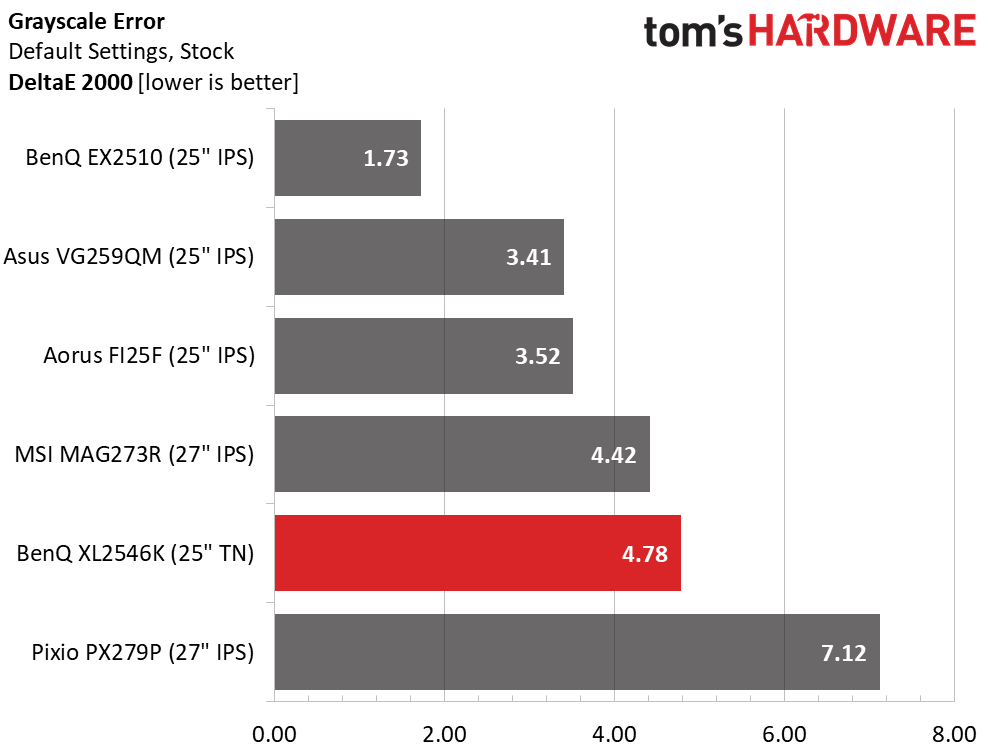
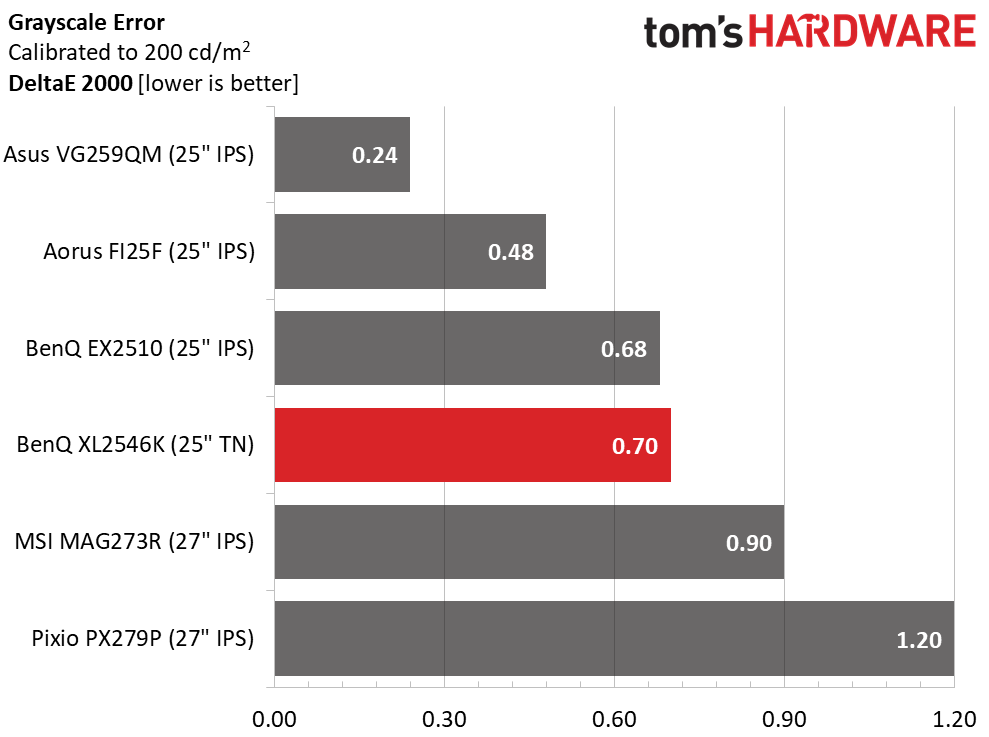

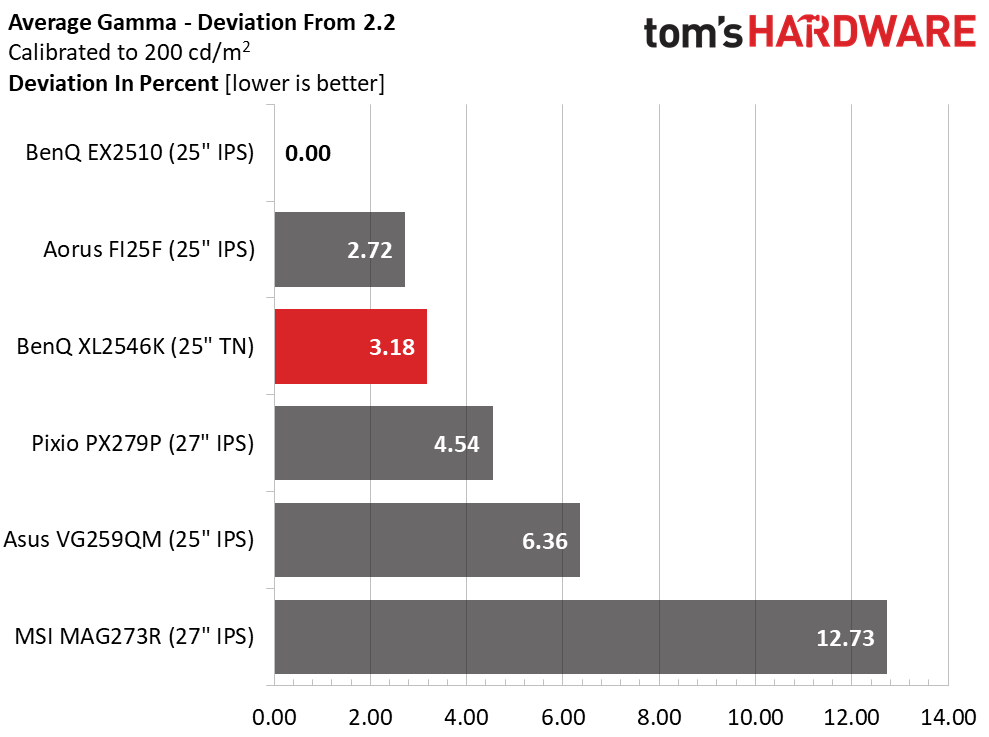
An average grayscale error of 4.78 Delta E (dE) is in keeping with the XL2546K’s old-school TN panel but it is capable of much better accuracy. Simply changing the picture mode to Standard lowers the error to 2.98dE which earns it a place on our calibration-not-required list. Further adjustment to the RGB sliders, gamma preset, and contrast control brings the error down to a professional-grade 0.70dE.
Gamma tracking in FPS1 mode is not optimal, and Standard offers a much tighter range of values. We recorded just 0.07 difference from lowest to highest. It doesn’t get much better than that. We couldn’t dial in a perfect 2.2 average, but our preference is to be a little over the line rather than under. This improves depth and color saturation, especially in monitors with relatively low contrast like this one.
Get Tom's Hardware's best news and in-depth reviews, straight to your inbox.
Color Gamut Accuracy
For details on our color gamut testing and volume calculations, click here.
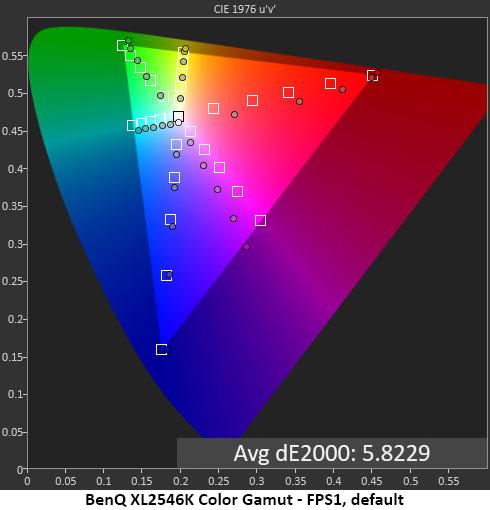
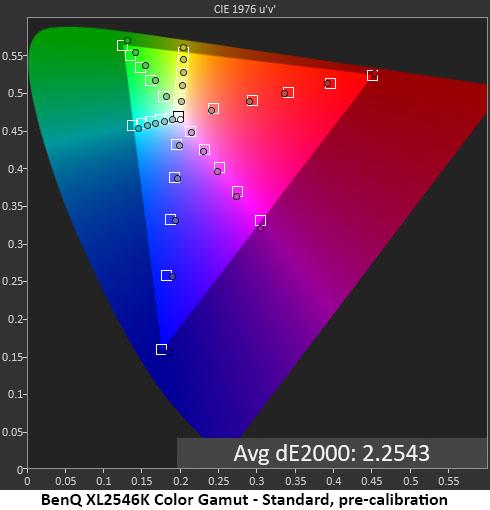
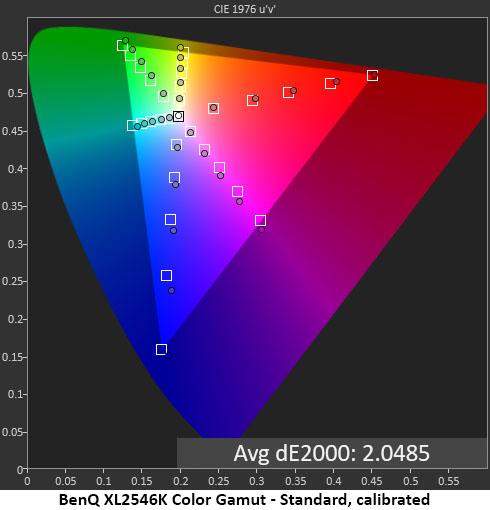
In the first chart, you can see the color clipping issue we spoke of. Blue tracks well but red and green have 80 and 100% saturation values that are nearly the same. That means any levels above 80% will blend together rather than showing fine differences in shading. This robs the image of detail and depth.
Changing to Standard fixes this issue almost completely. You won’t need to calibrate further if you don’t wish to. A 2.25dE error is very respectable. We reduced a little more with our grayscale and gamma adjustments. You can see the higher saturation values in all colors when compared to the pre-calibration chart.
Comparisons
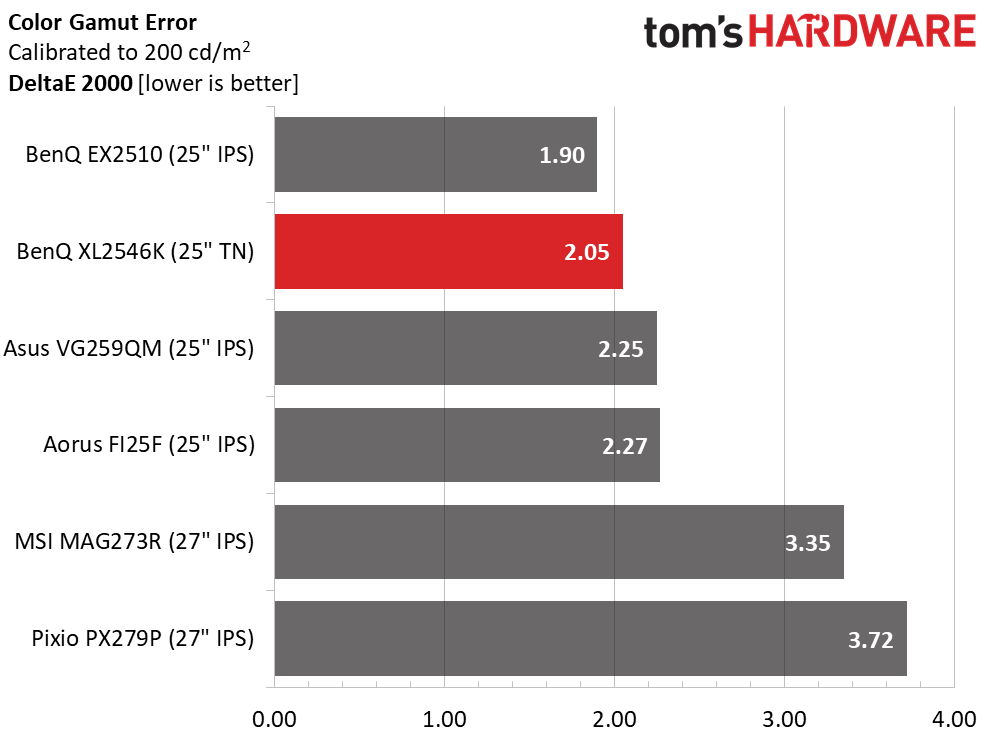
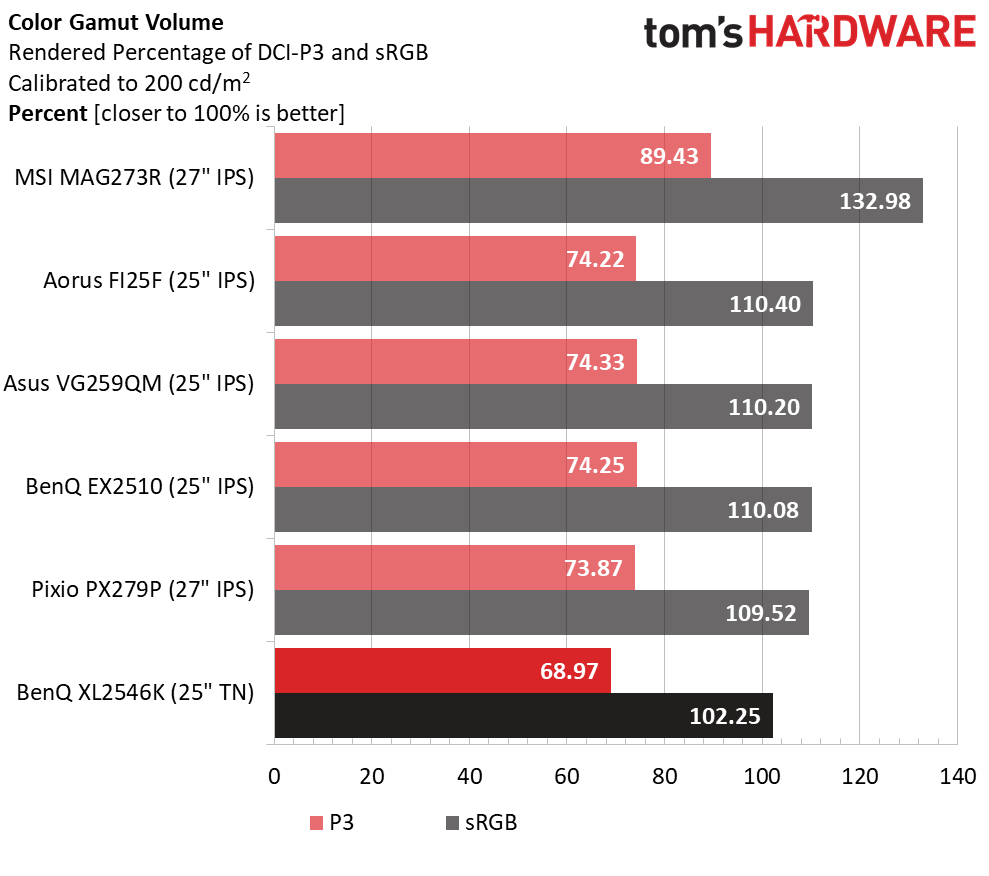
With the final average color error of just 2.05dE, the XL2546K has achieved its full potential. While it doesn’t have great contrast, its saturated color largely makes up for it. This is excellent performance, and, in this group, it’s only beaten out by another BenQ, the EX2510.
Color volume is strictly and accurately in the sRGB realm. The XL2546K is not a DCI-P3 panel but neither are the others save the MSI. Extended color is still something of a rarity among the fastest monitors but that will likely change in the near future. For now, if you want 240 Hz, you’ll probably just get sRGB. In this case, the XL2546K hits the marks well enough to qualify for color critical work once calibrated.
Current page: Grayscale and Gamma Tracking
Prev Page Brightness and Contrast Next Page Viewing Angles, Uniformity, Response and Lag
Christian Eberle is a Contributing Editor for Tom's Hardware US. He's a veteran reviewer of A/V equipment, specializing in monitors. Christian began his obsession with tech when he built his first PC in 1991, a 286 running DOS 3.0 at a blazing 12MHz. In 2006, he undertook training from the Imaging Science Foundation in video calibration and testing and thus started a passion for precise imaging that persists to this day. He is also a professional musician with a degree from the New England Conservatory as a classical bassoonist which he used to good effect as a performer with the West Point Army Band from 1987 to 2013. He enjoys watching movies and listening to high-end audio in his custom-built home theater and can be seen riding trails near his home on a race-ready ICE VTX recumbent trike. Christian enjoys the endless summer in Florida where he lives with his wife and Chihuahua and plays with orchestras around the state.
-
shaolin95 I find this statement very interestingReply
"When it comes to copying folders of data, Samsung’s 980 Pro delivers performance that is second to none. However, when reading back our large zip file, the Sabrent Rocket 4 Plus and WD Black SN850 demonstrated faster performance, though only by 60-80 MBps. "
Why do you downplay the advantage of the WD and Rocket by stating "only by 60-80 MBps" but overhype the Samsung advantage copying folders when it's only 69MBps over the WD????